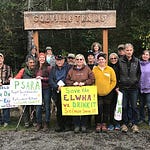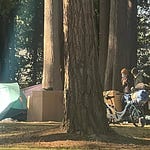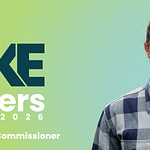The Dungeness Off-Channel Reservoir is being managed as a public works project—but should it be? Clallam County’s own Charter says watershed planning belongs to the Department of Community Development. So why is an unelected deputy running a project meant to restore streamflows and protect salmon? This quiet transfer of authority raises serious questions about transparency, accountability, and whether the County is following its own rules.
The Dungeness Off-Channel Reservoir is, by any fair reading of the facts, a watershed project. Its purpose? To improve summer streamflows, support aquifer recharge, assist with fish habitat, and stabilize irrigation. That’s not speculation — it’s pulled directly from the Jamestown S’Klallam Tribe’s official materials under a section titled “Watershed Planning:”
“A current area of focus... involves collecting Dungeness water during the wet part of the year, storing it in an off-channel reservoir, and then using that stored water for irrigation during the dry period. This concept is a result of extended discussions, planning and study, among multiple stakeholders...”
That may sound like infrastructure, but it’s also clearly watershed planning—which raises an important question: Why is Clallam County’s Department of Community Development (DCD) not leading the project?
What the Charter says
Clallam County’s Charter spells out the DCD’s role in no uncertain terms. According to Section 4.25, the DCD Director is responsible for:
“All laws, except health, with respect to the environment, natural resources, and land and shoreline development... including... watershed planning.”
That includes:
Watershed planning
Environmental policy
Natural resource management
So if the reservoir is tied to streamflow restoration, fish recovery, and long-term water supply, it appears to fall squarely within the DCD’s responsibilities.
So who’s in charge?
Currently, the project is being managed by Steve Gray, Deputy Director of Public Works—an appointed staffer, not an elected official. The DCD Director, Bruce Emery, has been largely absent from public discussions. When asked about the department’s role during a Charter Review Commission meeting, Emery stated that it was a Public Works project and not watershed planning.
The Board of Commissioners offered little clarification. Commissioner Mark Ozias said:
“The current Department of Community Development, I don’t believe, has felt to a large extent like they’ve had the bandwidth to participate in leadership in that project.”
Commissioner Mike French noted that the DCD has a “reasonable nexus” to watershed planning but offered no explanation for why they weren’t involved in this case. Commissioner Randy Johnson did not comment.
Accountability and oversight
This shift from DCD to Public Works isn’t just a bureaucratic decision — it changes how the project is managed and who is accountable. The DCD Director is elected by the people. Public Works leadership is appointed by the Board of Commissioners.
That distinction matters. Public works projects often focus on roads, culverts, and infrastructure. Watershed planning, on the other hand, involves balancing development with environmental protection and long-term land use policy. It’s why the Charter places that responsibility with the DCD.
What’s at stake
The Off-Channel Reservoir touches on multiple policy areas: land use, aquifer recharge, irrigation, climate resilience, and salmon recovery. These aren’t merely construction concerns — they are environmental planning issues with decades of regional history and stakeholder input behind them.
The Jamestown S’Klallam Tribe, the state Department of Ecology, and the Dungeness River Management Team have all tied this reservoir to broader watershed goals. And the County Charter clearly gives the DCD oversight of those matters.
If the project is reclassified as “just” public works, does that allow it to move forward without the same public process? Does it reduce the role of citizen advisory committees or sidestep environmental policy guidance? Those are questions worth asking.
Transfer of control
This may not be about who builds the reservoir — but about who guides it, who answers for it, and whether the County is following the Charter that voters approved.
By law, watershed planning is supposed to live under the Department of Community Development. Yet in practice, that authority appears to have shifted elsewhere — with no formal vote, and no clear explanation.
It’s something to watch. If you’d like to ask the commissioners why they’ve taken over the reservoir project, all three can be reached by contacting the Clerk of the Board at loni.gores@clallamcountywa.gov. The Director of the Department of Community Development can be contacted at bruce.emery@clallamcountywa.gov.












